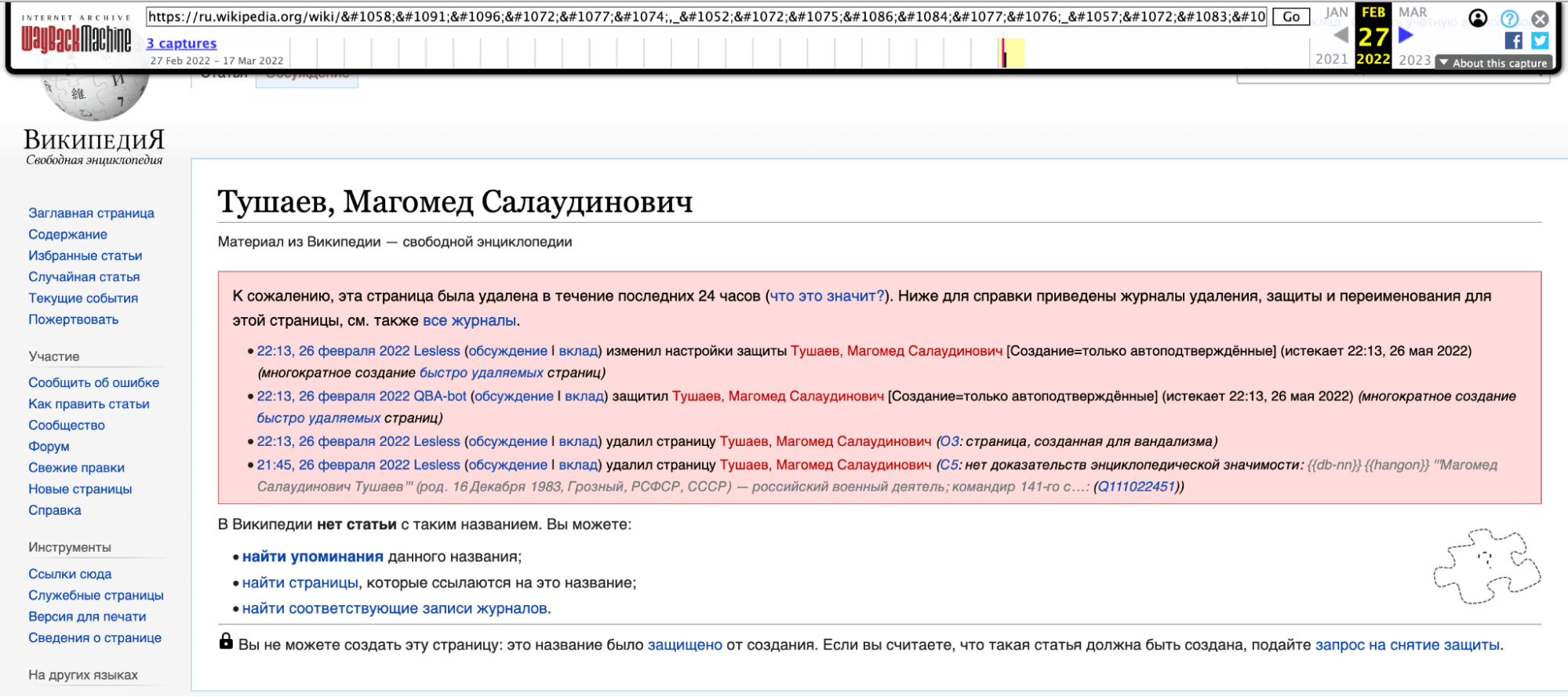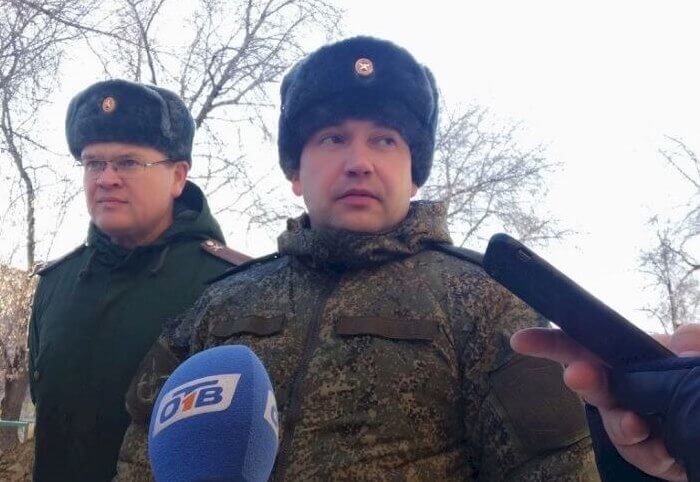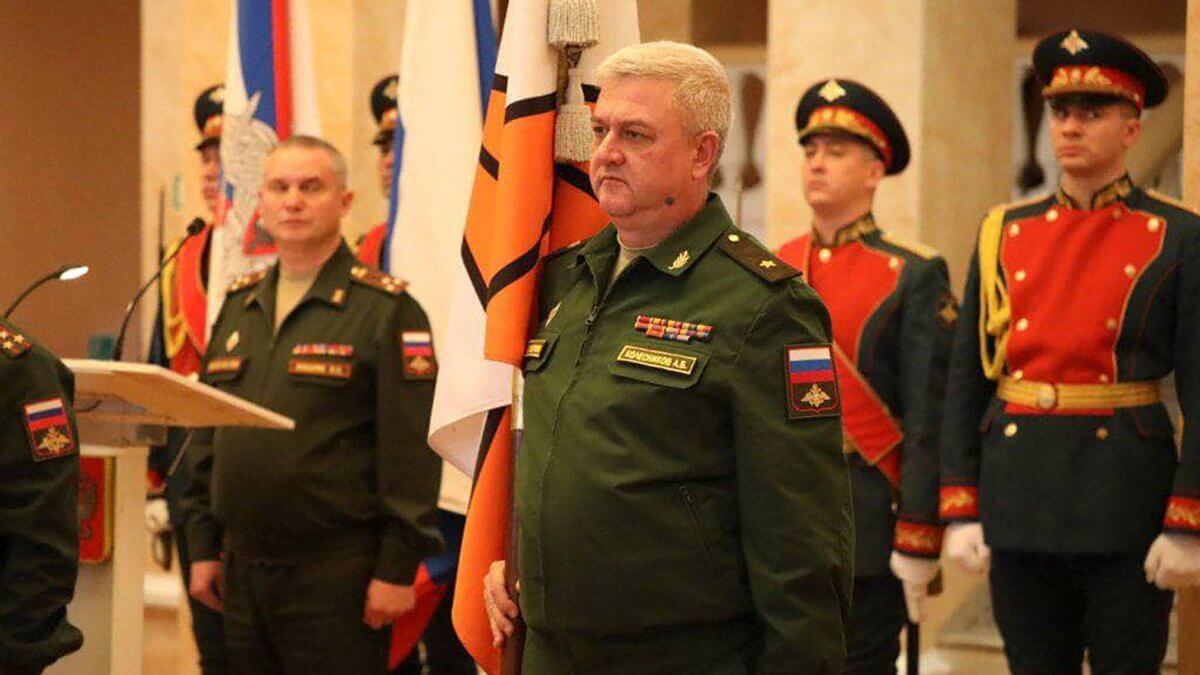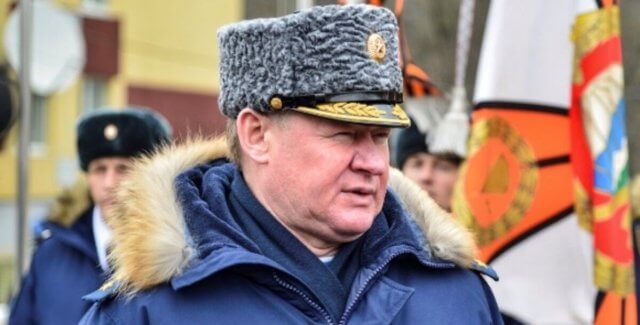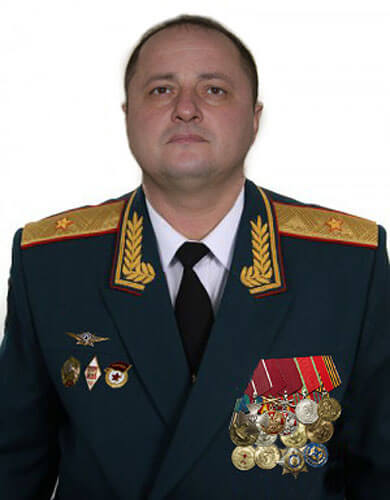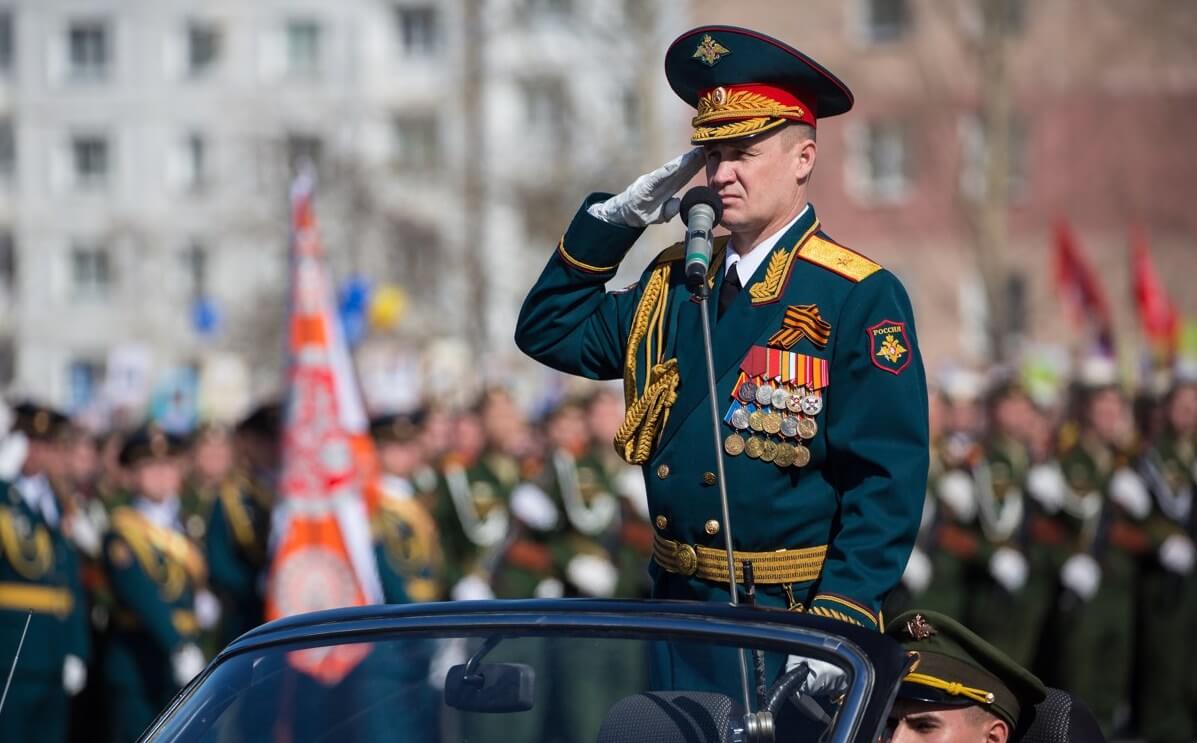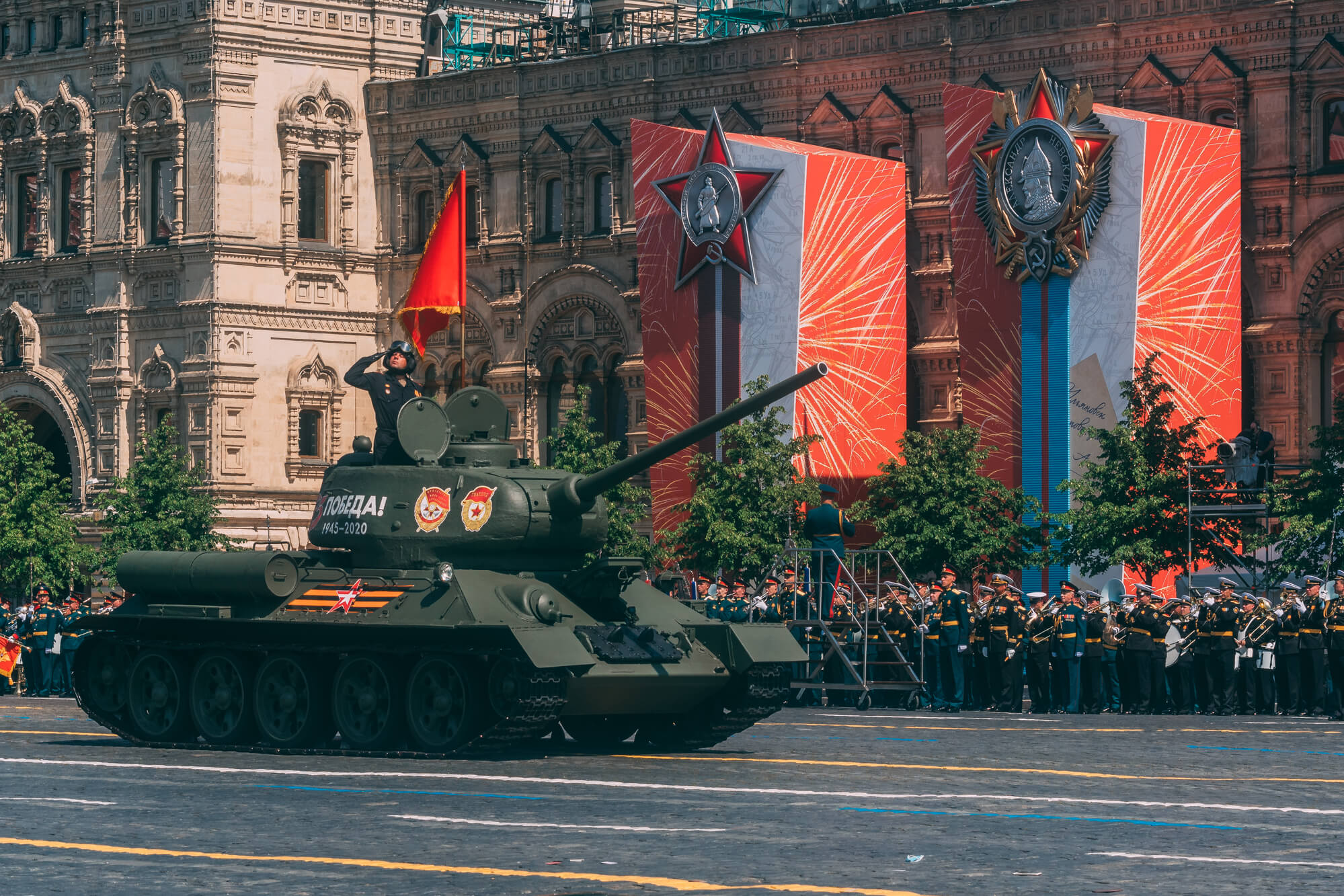According to Ukraine’s General Staff, from February 24 to March 23, russia lost 15.8 thousand troops in Ukraine. In particular, the Armed Forces eliminated more than ten of the russian army’s highest commanders. Among them were six major generals. Only one proved important enough for russia to abandon its “no-losses axiom” and recognize his death.
What did these major generals do to curry favor with the Kremlin? Two of the six had For the return of Crimea medals. Four have been directly or indirectly involved with the occupation of Donbas. And each one has high decorations for crimes committed by the russian army around the globe.
VoxCheck tells about how the Kremlin’s decorated favorites distinguished themselves before their death during the invasion of Ukraine.
Magomed Tushaev: Kadyrov’s favorite
Major general, commander of the 141st special motorized regiment of the national guard of the russian federation, i.e., “Kadyrov’s private army” (Grozny). Eliminated on February 26 near Hostomel.
Magomed Tushaev (left), Ramzan Kadyrov (right). Source: Chechnya Today
Tushayev was close to Chechen leader Ramzan Kadyrov. When appointing Tushayev to lead the 141st regiment, the latter called him “a professional capable of carrying out any task accurately and on time.” He continued to praise his “brave deeds” after the invasion of Ukraine.
Tushayev joined Chechen OMON at 22 in 2008. He later became the commander of Trek, an elite team within the national guard’s SOBR unit. In 2018, Magomed Tushayev was appointed commander of the 141st special motorized regiment “Akhmat-Khadzi Kadyrov” of the national guard of the russian federation.
Tushayev had many decorations, including the medal For Courage, the Order of Courage, and the Police Excellence badge for “fighting against terrorism.” He was even awarded the Order of Akhmat Kadyrov, the highest decoration in Chechnya. To give you an idea, deputy head of the russian presidential administration Dmitry Kozak and former president of Kazakhstan Nursultan Nazarbayev have one.
There is no information about Tushayev’s doings. But little wonder: even the remnants of information about Kadyrov’s minion were immediately “cleaned up” after the announcement of his death. Several YouTube videos about Magomed Tushaev were removed, including congratulations from Kadyrov on his 34th birthday. As for Tushayev’s speaking, there is a 2020 interview in which he spoke about “dreaming of war as a child.”
Life after death
Magomed Tushayev’s death was confirmed by one of the captives, Evgeny Spiridonov, an OMON member from the Kemerovo region. The SBU posted video recordings of his interrogation. Magomed Tushayev’s death was announced by the Armed Forces on the evening of February 26 and confirmed by Ukraine’s Defense Ministry a few hours later.
According to the Wayback Machine, the article about Tushayev was removed from the Russian Wikipedia at about 3 a.m. on February 27. Probably because the latest version said Tushayev died near Hostomel on February 26, 2022.
Ramzan Kadyrov immediately began to deny Tushayev’s death on the evening of February 26. And on March 3, a video appeared online showing Tushayev videoconferencing with Kadyrov, followed by Tushaev’s video address on March 16 (not without some confusion: news of the video address came out on March 13 before they posted the video). The two videos had deleted metadata indicating the date when they were made. Kadyrov tried to make sure no one could check out when those videos were filmed.
Page deletion history. Wayback machine
According to the latest Russian version, Tushayev died near Hostomel on February 26, 2022. Wayback machine
Vitaly Gerasimov: a “peacemaker” with a medal for occupying Crimea
Major general, first deputy commander of the 41st army of russia’s Central Military District (Novosibirsk). Eliminated on March 7 during fighting near Kharkiv.
Vitaly Gerasimov (right). Photo from the Internet
All publicly available information about Gerasimov comes from official russian sources and is very scarce. He served in the North Caucasus, Far East, and russia’s South and Central Military Districts. He started as a tank platoon commander and eventually became the commander of a motorized rifle brigade.
According to russia’s defense ministry website, Gerasimov “repeatedly performed combat missions” in Syria. He was awarded the Order of Courage, the Order For Military Merit, medals of the Order For Merit to the Fatherland of II and IV degrees, and other decorations. According to Ukraine’s intelligence, Vitaliy Gerasimov took part in the second Chechen war and received the For the Return of Crimea medal.
In October 2013, Gerasimov was appointed commander of the 15th separate motorized rifle brigade of the CMD. It is the only brigade within russia’s armed forces with “peacemaker” status as part of the UN-mandated international peacekeeping forces. The 15th brigade took part in the Russian-Georgian war and was transferred to Nagorno-Karabakh in 2020.
The international intelligence community InformNapalm established that this brigade had fought on Ukrainian soil since 2014, mainly in the Luhansk region. It also took part in the occupation of Crimea, after which it was supposed to invade Ukraine’s territory at the time of proclaiming the “Kharkiv People’s Republic.”
Investigators identified 40 russian service members from the brigade, but Vitaly Gerasimov was not amongst them. So it is not known whether or not Gerasimov had been in Ukraine before his final tour in 2022.
Ukraine’s Ministry of Defense reported that Gerasimov was killed near Kharkiv. Russia’s defense ministry did not comment on this, but on March 16, Alexei Navalny’s chief of staff posted a picture from Gerasimov’s funeral in Yekaterinburg. According to Christo Grozev, executive director of Bellingcat, information about Gerasimov’s death was confirmed by phone conversations of Russian officers intercepted by the SBU.
Andrei Kolesnikov: he never came back from “military exercises” in Ukraine
Major general, commander of the 29th army of the eastern military district (Chita). Eliminated on March 11, the exact location is unknown.
Andrei Kolesnikov. Source: russia’s defense ministry
Kolesnikov is perhaps the most public figure among the generals who came to Ukraine to die. You can even find his interview online.
Andrei Kolesnikov was born in the Voronezh region in 1977. He graduated from the Chelyabinsk Higher Tank Command School and the Combined Arms Academy of the armed forces of the russian federation.
In 2015-2018, he commanded the 4th guards tank (Kantemirovskaya) division. The unit participated in russian operations in South Ossetia, Kosovo, and Chechnya. Together with the Tamanskaya division, the Kantemirovskaya division is part of the First Guards Tank Army, an elite unit within the russian army participating in parades since 1946.
But, unlike the parades, the “legendary” tank army sucks at real military action. Ukrainian troops defeated it near Kharkiv. Twenty-two members of the 2nd Tamanskaya Guards Tank Division, led by the deputy commander of the armament regiment and the tank battalion commander, surrendered to Ukrainians.
According to an Atlantic Council investigation, at least nine soldiers from the Kantemirovskaya division took part in fighting in Donbas. A Reuters investigation mentioned the testimony of a Kantemir division member sent to fight in eastern Ukraine in 2014. His crew operated an upgraded T-72B3 tank. He and several of his colleagues later resigned, disappointed with how their commanders received them after returning from Donbas.
In December 2017, Putin promoted Andrei Kolesnikov to major-general. At the end of 2021, Kolesnikov headed the army of the Eastern Military District. In 2022, Kolesnikov was in charge of preparations for the Vostok 2022, a joint Russian-Belarusian exercise, under the guise of which Russia was building up troops near Ukraine’s borders.
It is unknown where or under what circumstances Kolesnikov completed his last “exercise” in Ukraine. There were no details of his death.
Andrei Sukhovetsky: decorated enough for russia to recognize his death
Major general, deputy commander of the 41st army of the Central Military District (Novosibirsk). Eliminated on March 3; the exact location is unknown.
Andrei Sukhovetsky. Source: reform.by
Sukhovetsky was one of the most decorated generals who had extensive combat experience. He had 14 medals and orders, including two Orders for Courage, the Order of Military Merit, the Medal of Courage, and the Order of Military Valor. Sukhovetsky even participated in parades on Red Square several times. According to russia’s defense ministry, he made his way from a platoon commander to the chief of staff of a guards air assault division.
Sukhovetsky had been with russia’s armed forces since 1991. He fought in Abkhazia in 1995-1998, in the North Caucasus in 1999-2000, and Syria in 2018 and 2019. He also participated in the russian occupation of Crimea and got the For the Return of Crimea medal. According to unconfirmed reports, he participated in the annexation as commander of the 217th guards airborne regiment.
Under Sukhovetsky’s command, russian paratroopers underwent training in Crimea several times in 2021. By the end of 2021, they had plans to build infrastructure for russia’s new airborne assault regiment as part of the 7th airborne assault division in Novorossiysk. Sukhovetsky commanded it at the time.
The division fought in Azerbaijan, Afghanistan, the North Caucasus, Georgia, and occupied Crimea in different years.
Sukhovetsky’s merits were enough for russia to recognize his death and bury him with honors in Novorossiysk on March 5. They even published several eulogies, calling him “a real officer of Soviet training” and “perfectly educated in the best traditions of Russian officers.”
Oleg Mityaev: “Barge” from “DPR”
Major general, commander of the 150th motorized rifle division. Eliminated on March 15 in Mariupol.
Oleg Mityaev. Source: website of the graduates of Omsk military academy named after Frunze
Mityaev died an ideal death from Russian propagandists’ point of view, being eliminated by members of the Azov Regiment.
Mityaev also had several awards: the Order of Courage and medals named after Zhukov and Suvorov. In 2015, he got the medal For Merits to the Fatherland with swords, awarded for participation in hostilities. However, there is no information regarding Mityaev’s merits.
Oleg Mityaev served in various positions in airborne troops starting in 1991. According to official data, he commanded a separate assault brigade in russia’s Eastern Military District (Ulan-Ude) in 2013-2015. In 2015-2016, he headed the 1st department (reserve formations of motorized rifle troops) of the 12th command of the reserve of the Southern Military District.
However, in 2018, the SBU published data about russian officers working undercover in Donbas based on counterintelligence information. The data included the call sign “Barge,” used by Oleg Yurievich Mityaev. According to the SBU, he was commander of the 1st SMRB in Kalmiuske, Donetsk region, from October 2015 to November 2016. He served under the name of Colonel Mykola Mykolayovych Dygalo (Varrava). He was known for destroying and looting local infrastructure and mocking Ukrainian militants. He personally transported a large number of Russian soldiers’ bodies to the Republic of Buryatia.
In June 2016, Putin awarded him the rank of major general. He was later made commander of the 201st Gatchina Military Base in Tajikistan and deputy commander of russian troops in Syria in 2021. According to russian media, Mityaev led the parade dedicated to May 9 at the Russian base Khmeimim in Syria.
In 2021, Mityaev was appointed commander of the 150th motorized rifle division formed in the Rostov region in 2016. According to international investigators at InformNapalm, there was an unprecedented surge in militarization and formation of new divisions in the border areas with Ukraine at the time.
The division’s equipment was reportedly seen near the occupied Donbas. In 2018, russia transferred armored vehicles with blurred license plates to the Ukrainian border: probably to use them in the occupied Donbas. InformNapalm established that the BMPs belonged to the 102nd or 103rd motorized rifle regiments of the 150th motorized rifle division.
In an interview with NV, Oleksiy Arestovych, an adviser to the Office of the President of Ukraine, said Mityaev was famous for his brutal treatment of the local population in Mariupol in 2022.
He was killed there by members of the Azov Battalion during an attack on the positions of the 22nd separate guards brigade of the GRU special staff of the general staff of russia’s armed forces.
Andrei Mordvichev: a general who did not survive the attack on a village in the Kherson region
Lieutenant general of the armed forces of the russian federation, commander of the 8th combined arms army of the Southern Military District (Novocherkassk). Eliminated on March 19 during a strike on the airfield in Chornobayivka, Kherson region
Andrei Mordvichev. Source: astv.ru
There is little publicly available information about Mordvichev. He was born in 1976, but his place of birth is not known. There is no information about when Mordvichev entered the service and what he did until 2011 when he was appointed commander of the 4th separate tank brigade (later formed into a division). That is, the “famous” division later headed by Andrei Kolesnikov whom we mentioned earlier and whose members took part in fighting in Donbas.
In 2013, Mordvichev was promoted to the rank of major general, although it is not known where he served. In 2014, Andrei Mordvichev commanded the 28th motorized rifle brigade.
In 2014, InformNapalm reported on the BTG of the 28th brigade in the Rostov region bordering Ukraine. They allegedly participated in a training exercise, but the brigade’s soldiers wrote on social media about their dead fellows. Later, it was proved that some of the service members participated in hostilities in Donbas. Some even received medals for it. According to the Anti-Terrorist Operation Headquarters, in 2015, the 28th GMRB units were active around the cities of Bryanka and Stakhanov.
Where Mordvichev served in the following years is not known. In 2017, he was mentioned as head of the South Sakhalin region, and in 2018, as first deputy commander of the 41st combined arms army (thence came too Sukhovetsky and Gerasimov). He is known to have hosted a parade in Yuzhno-Sakhalinsk and run parades in Novosibirsk and Volgograd.
Mordvichev did not receive too many awards. He had the Suvorov Medal and the Order of Military Merit of the II degree. His new decorations can only be posthumous – of course, if the russian federation stops pretending they have “no losses” at some point.
Attention
The author doesn`t work for, consult to, own shares in or receive funding from any company or organization that would benefit from this article, and have no relevant affiliations

